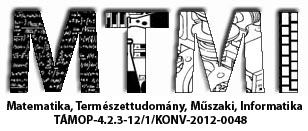Distribution of cannabinoid-2 receptor immunoreactivity in the superficial spinal dorsal horn of the rodent spinal cord
Előadás adatai
Endocannabinoid mediated signaling mechanisms play important roles in the function of most organs including the peripheral and central nervous system. Although endocannabinoid mechanisms may modulate almost all body functions, the way how they participate in these regulatory functions may show a high variability since the molecular organization of the endocannabinoid signaling apparatus has been reported to be different in different organs. For example, the two major cannabinoid receptors, CB1-R and CB2-R, have been demonstrated to show a remarkably different distribution. CB1-Rs are found mostly in the central nervous system whereas CB2-Rs are primarily expressed in cells of immune and hemopoietic origin. There are also some organs in which both CB1-R and CB2-R are expressed. It is, however, unknown how the two receptors can collaborate with each other in the regulation of certain body functions.
The superficial spinal dorsal horn (laminae I-II) appears to be a good model to investigate the collaboration of CB1-R and CB2-R mediated endocannabinoid mechanisms in the modulation of spinal pain processing. It is well accepted that laminae I-II, the nociceptive recipient part of the spinal gray matter, show a strong expression of CB1-Rs and play a major role in the modulation of acute and chronic pain. Some recent reports, however, also suggest that CB2-Rs may also be present in laminae I-II. Thus, in the present experiment we investigated the expression of CB2-Rs in the superficial spinal dorsal horn of naïve animals by using immunocytochemical staining methods. Single immunostaining showed a weak but obvious punctuate staining for CB2-Rs in laminae I-II. In double immunostaining protocols, combining the detection of CB2-Rs with staining of various axon terminals and glial cells we found co-localization between CB2-Rs and axonal as well as glial markers. Our results indicate that CB2-Rs are expressed in both neurons and glial cells in the superficial spinal dorsal horn, and thus may work together with CB1-Rs in the modulation of spinal pain processing.
Támogatók: Támogatók: Az NTP-TDK-14-0007 számú, A Debreceni Egyetem ÁOK TDK tevékenység népszerűsítése helyi konferencia keretében, az NTP-TDK-14-0006 számú, A Debreceni Egyetem Népegészségügyi Karán folyó Tudományos Diákköri kutatások támogatása, NTP-HHTDK-15-0011-es A Debreceni Egyetem ÁOK TDK tevékenység népszerűsítése 2016. évi helyi konferencia keretében, valamint a NTP-HHTDK-15-0057-es számú, A Debreceni Egyetem Népegészségügyi Karán folyó Tudományos Diákköri kutatások támogatása című pályázatokhoz kapcsolódóan az Emberi Erőforrás Támogatáskezelő, az Emberi Erőforrások Minisztériuma, az Oktatáskutató és Fejlesztő Intézet és a Nemzeti Tehetség Program



